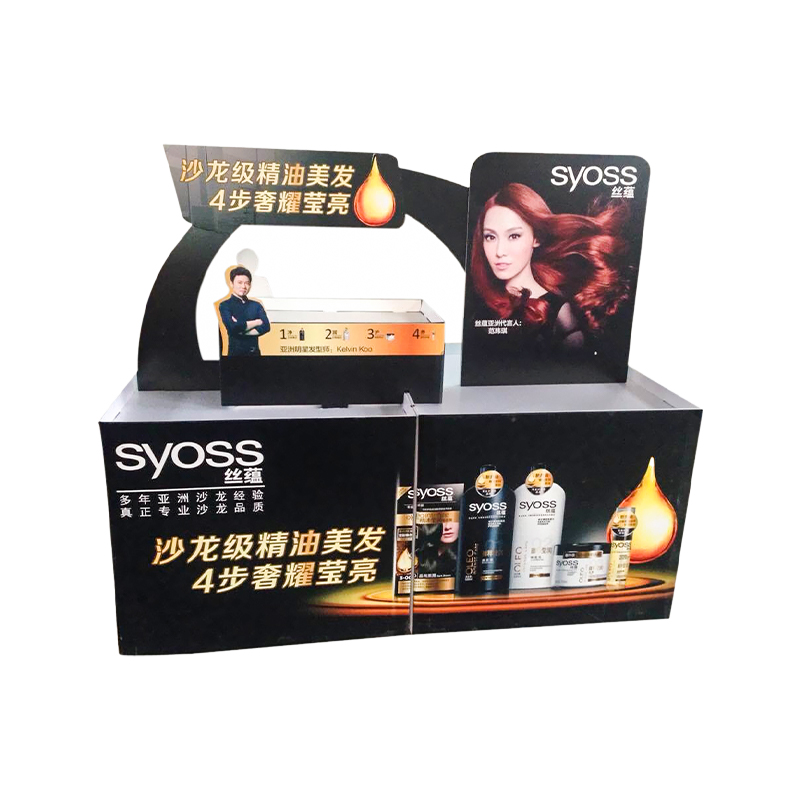-
 +86-0557-3781111 / +86-0571-56396277
+86-0557-3781111 / +86-0571-56396277
 +86-0557-3781111 / +86-0571-56396277
+86-0557-3781111 / +86-0571-56396277
Arches and other geometric shapes are effective in strengthening cardboard display stand structures because of the way they distribute forces and enhance structural integrity. Here's why:
Arches Distribute Weight Evenly
The arch is one of the most stable shapes in engineering. When weight is applied to an arch, the force is distributed evenly along the curve, transferring it down to the base rather than concentrating it in one spot. In cardboard display stands, incorporating arched shapes helps spread out the load, reducing the likelihood of localized failure or buckling.
Triangles Provide Stability
Triangular shapes are another important geometric feature used in cardboard design. Triangles are inherently rigid because they cannot be deformed without changing the length of one of their sides, unlike squares or rectangles, which can collapse under pressure. By incorporating triangles into the design (e.g., triangular supports or gussets), the structure becomes more stable.
Curves Resist Compression
Curved shapes, like arches or circular cutouts, have a natural ability to resist compression. When pressure is applied to a curve, the forces are redirected outward along the curve’s surface, distributing stress across a larger area and helping the structure withstand more weight.
Hexagons and Honeycomb Patterns
Hexagons are commonly used in nature (e.g., honeycomb structures) because they offer a high strength-to-weight ratio. In cardboard designs, using hexagonal shapes can enhance strength without adding much extra material. Honeycomb patterns inside the cardboard help spread the load across multiple points, providing additional rigidity.
Cylinders and Tubes Resist Bending
Cylindrical shapes, like tubes, are commonly used in supports because they resist bending and collapse. A circular tube in a cardboard structure can bear loads from multiple directions while using a minimal amount of material. In display stands, cylindrical supports or reinforced rounded edges add strength while keeping the stand lightweight.

Folds and Creases Add Rigidity
Strategic folding of cardboard can create V-shaped or angular structures, which mimic the strength of arches and triangles. These folds create natural reinforcements that add rigidity to flat surfaces, preventing them from bending under weight. For example, a zigzag fold or accordion shape can drastically improve the stand’s load-bearing capability.
Combining Shapes for Maximum Efficiency
Often, cardboard display stands combine multiple geometric shapes—such as arches for load distribution, triangles for stability, and curves for compression resistance—to create a structure that is both lightweight and strong. This combination maximizes the material’s natural strengths while minimizing its weaknesses.
Arches, triangles, curves, and other geometric shapes work together to distribute forces, resist compression, and prevent deformation, making cardboard display stands strong and stable despite their lightweight nature.
Annhiu Address: Yishan Road and Qingshengou Road Intersection, Suzhou Economic Development Zone, Anhui, China
Tel: +86-0557-3781111
E-mail: [email protected]
Hangzhou Address: Building 3, No.286, Renliang Road, Renhe Street, Yuhang District, Hangzhou, Zhejiang, China
Tel: +86-0571-56396277
E-mail: [email protected]
Copyright © Hangzhou Shengpin Packaging Co., Ltd. All Rights Reserved.
